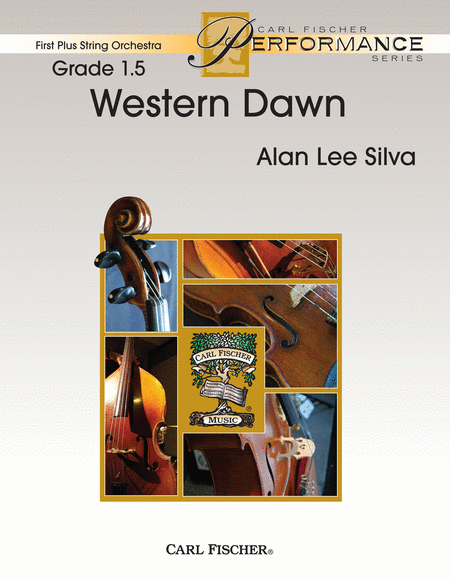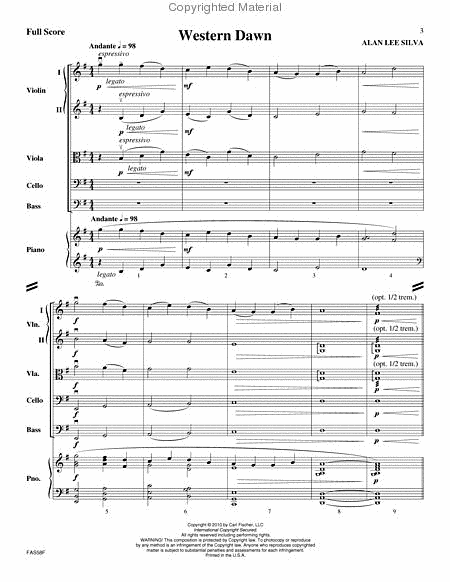Western Dawn
-
Ships in 1 to 2 weeks
Details
Description
SKU: CF.FAS58
Composed by Alan Lee Silva. Collate - FS SWS. First-Plus String Orchestra (FAS). Set of Score and Parts. With Standard notation. 16+16+10+4+4+10+10+12 pages. Carl Fischer Music #FAS58. Published by Carl Fischer Music (CF.FAS58).ISBN 9780825873188. UPC: 798408073183. 8.5 x 11 inches. Key: G major.
All of the elements that you have come to know and love about the music of Alan Lee Silva are present in this beautiful new composition. Starting with the pastoral opening phrase, Western Dawn paints a portrait of Americana in AABCA form, underscoring the comings and goings of a small western town as the sun fills the morning sky. This piece is full of opportunities to improve the musicianship of your group, including double stops and multiple tempo changes. Duration: 2:54.
Starting with the pastoral opening phrase, Western Dawn paints a portrait of Americana, underscoringthe comings and goings of a small western town as the sun fills the morning sky.The form is AABCA. In general, the (A) sections (m. 10, m. 18, m. 50) are played with a spirited, vigorous marcato, and the (B) section at m. 26 is played with a graceful and emotional legato. The pulsing (C) section at m. 36 features a question and answer between Violin I and Violin 2/Viola, plus open-string, double-stops in the high strings. There are four major tempo changes in the piece: slowly at m. 1, moderately at m. 21, slowly again at m. 61, then a return to Tempo I (slightly slower) at m. 66. Cascading legato violin and viola melodies highlight the leisurely introduction, then the tempo quickens at m. 10, and the ensemble plays with drive and fire on the (A) melody.The violins and viola play the (A) melody with an accented foundation from the cellos and basses. At m. 18, the violins continue with the melody over open-string, double-stops in Violin II, Viola, and Cello. The (B) melody is the flowing departure from the (A) theme, which then moves to the rhythmic (C) section. This driving interlude over a pedal point sets up the return to the (A) melody.At m. 61, the elongated (A) theme is now played majestically as the melodic rhythm and tempo slows. The final four bars are played strongly and aggressively, reiterating the original phrasing of the(A) theme. This sparks the ensemble sixteenth notes in m. 68 and the final note in m. 69 that the group.


 Share
Share